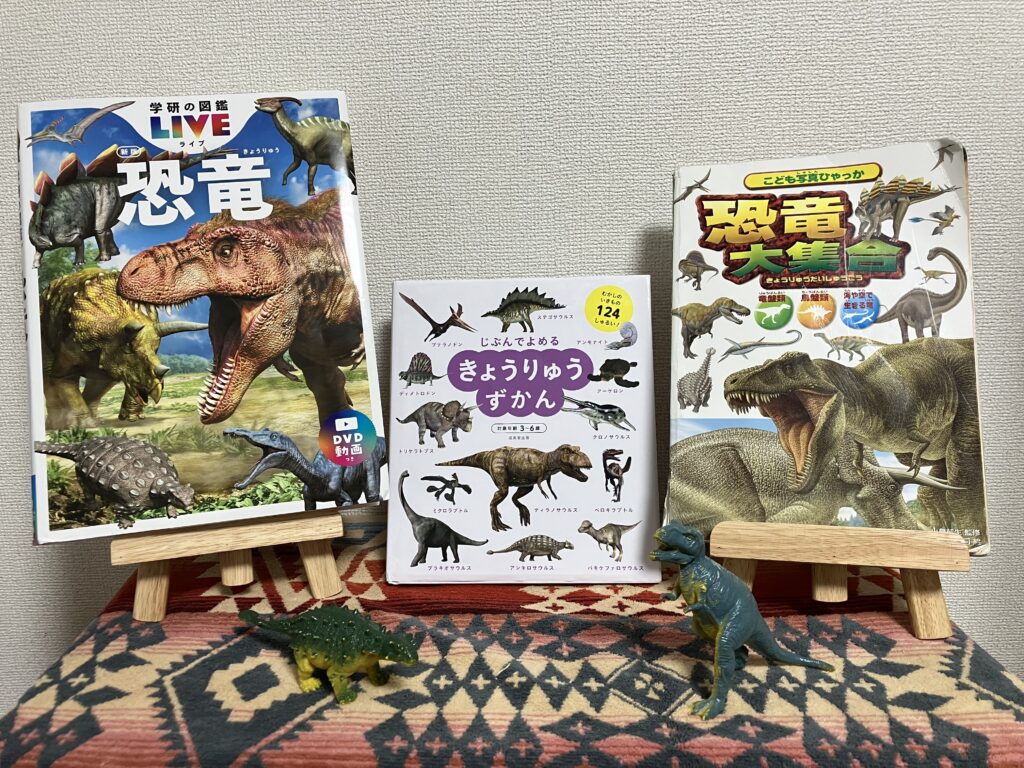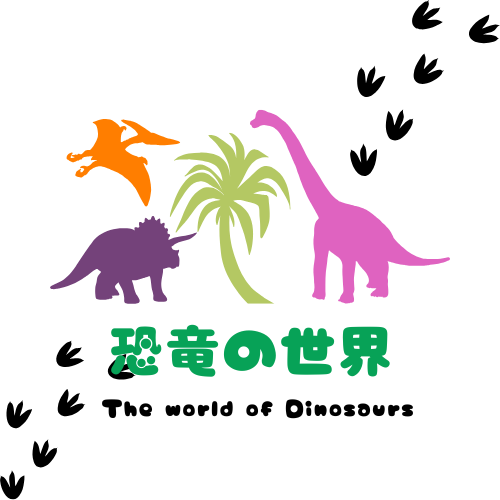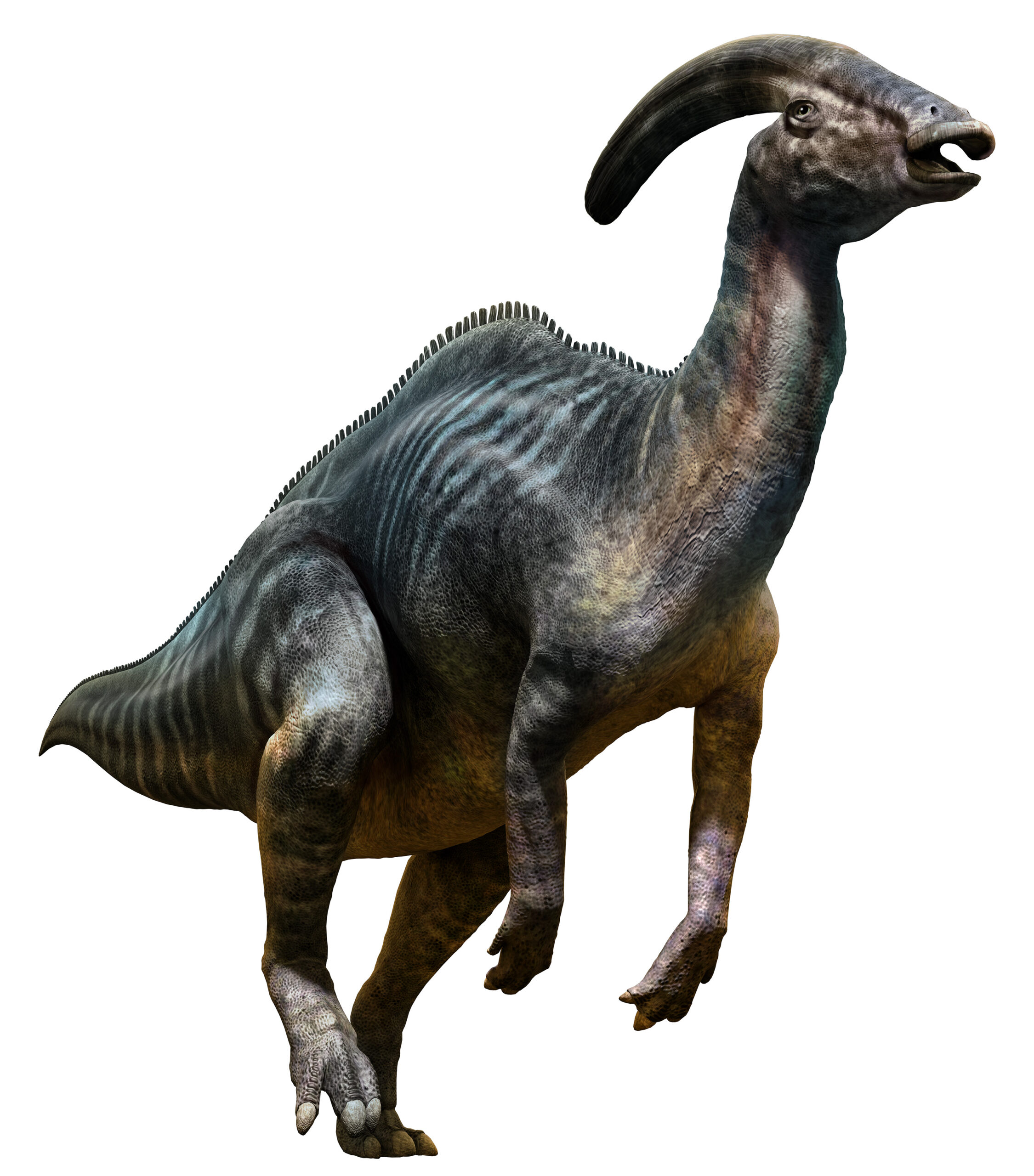📝基本情報(Basic Information)
・生物分類:ハドロサウルス科 (Biological classificatio:Hadrosauridae)
・体長:約9~10メートル (Body length : Approximately 9 to 10 meters )
・体重:2.5~3.5トン程度 (Weight : Around 2.5 to 3.5 tons)
・高さ:約4~4.5メートル ※トサカ含む (Height : pproximately 4 to 4.5 meters (including the crest))
・生息地:アメリカ・カナダ (Habitat:North America )
・時代:白亜紀後期 約7650万~7300万年前 (Epoch : Late Cretaceous period, approximately 76.5 to 73 million years ago )
・食性:植物食 (Diet:herbivore)

基本的に地面の植物を食べるときは、前傾姿勢の4足歩行をしていたようですが、実は走るときや立ち上がって高い植物を食べるときなどは、後ろ足だけで立ち上がることができたようですね。身体能力高いですよね😆
(It seems that Parasaurolophus usually walked on all fours with its body leaning forward when eating plants close to the ground. However, it could actually stand up on its hind legs when running or reaching for tall vegetation. Pretty impressive physical ability, right? 😆)
👀特徴(Feature)
・トサカ: なんといってもパラサウロロフスの特徴は、頭から空中に伸びたトサカですよね、平均的な長さは約1.5〜1.8メートル、最大級の標本でおよそ2メートルのものがあるようです。トサカだけで成人男性の身長位あるんですよね。トサカの不思議はまた後程説明します。 (Crest:The most distinctive feature of Parasaurolophus is, without a doubt, the crest that extends from the back of its head into the air. On average, it measured about 1.5 to 1.8 meters in length, with the largest known specimen having a crest around 2 meters long. That means the crest alone was about the height of an adult human! I’ll explain more about the mysteries of the crest later.
・口ばし状の口:カモノハシのような平らな口をしていて、前の方の口ばしには歯が無く、くちばしで植物を刈り取ったりすくい取って、奥にタイル状に敷き詰められた歯で細かくすりつぶして食べていたようです。
(beak-like mouth : It had a flat, duck-bill-like mouth, and the front part of its beak had no teeth. It likely used the beak to clip or scoop up plants, then chewed them thoroughly with tile-like teeth arranged in the back of its mouth.)
・脳 : ラサウロロフスの脳は、体の大きさに比べて小さめなようです。おおよその体長が9~10mに対して、脳は約30cm以下のサイズとされます。また脳内には内耳とつながる聴覚を処理する領域がしっかり確認されていて、音をしっかり聞き分けるために発達していたと考えられているようですね。 (Brain:Parasaurolophus had a relatively small brain compared to the size of its body. While its body length was about 9 to 10 meters, its brain is estimated to have been less than 30 centimeters in size. However, a well-developed region in the brain connected to the inner ear has been identified, suggesting that it had a keen sense of hearing and was capable of distinguishing sounds effectively.)

そういえば植物食恐竜の口って口ばしの構造をしている種類が多いですよね。よく考えたら不思議な体のつくりですよね。これは口ばしで植物の刈り取りの役割を担っているのと、なるべく早く植物をかき集めて呑み込むのに適した構造になっているようですね。
(Come to think of it, many herbivorous dinosaurs had beak-like mouths, didn’t they? When you really think about it, it’s a pretty strange anatomical feature. Apparently, the beak served to efficiently cut and gather plants, and its structure was well-suited for quickly collecting and swallowing vegetation.)
🏃♀️走る速さ:推定走行速度(Running speed :estimated running speed)
パラサウロロフスの走行速度は時速24~40km程度といわれています。これは現代の人間の短距離ダッシュ〜ちょい早いジョギングくらいですよね。走るときや捕食者から逃げるときは二足歩行で頑張ってスピードを出したと考えられています。それを可能にしているのが強靭な筋肉が発達した後ろ脚ですね。アンキロサウルスやトリケラトプスのように防御手段がないパラサウロロフスは、逃げるの一択だったんですね。 (Parasaurolophus is estimated to have had a running speed of around 24 to 40 kilometers per hour. That’s about the speed of a modern human sprint or a brisk jog. It is believed that when running or fleeing from predators, Parasaurolophus switched to bipedal movement to gain speed. This was made possible by its powerful, muscular hind legs. Unlike dinosaurs such as Ankylosaurus or Triceratops, which had built-in defense mechanisms, Parasaurolophus had no such protection—so escaping was its only real option.)

パラサウロロフスはとても弱い恐竜だったようですね。鎧をまとったり、武器を持ち合わせない丸腰の恐竜だったんですね。その影響で現代のアフリカのシマウマの様に、常に群れで行動して自分が襲われるリスクを回避していたらしいですよ。
(Because Stegosaurus was extremely slow at escaping, it seems that fighting was its only option when attacked. There’s something kind of admirable about that. Was it bravery… or was it just that, with a brain the size of a walnut, it couldn’t come up with any other plan? Which is it!?)
💡トサカの不思議(The Mystery of the Crest)
パラサウロロフスといったらトサカですよね。トサカの役割はいくつか説があって、①音の共鳴器官(コミュニケーション)説、➁視覚的ディスプレイ、➂嗅覚の強化、➃体温調節装置 と言われていますね。 【➀音の共鳴器官】 トサカの内部が空洞になっていて、それが共鳴腔となり低周波の音を発生できたようです。これは遠距離コミュニケーションや、縄張り・求愛行動に使われた可能性あるようですね。 【②視覚的ディスプレイ】 大きく目立つトサカはメスに対しての視覚的アピールに使われていたようです。 【➂嗅覚の強化】 トサカが嗅覚の補助器官だと考えられたようですが、現在は否定的とのことです。 【➃体温調節装置】 トサカに血管が張り巡らされていたとすれば、体温調節の補助器官として機能したとの説もあります。
(There are several theories about the function of the crest. ① Resonating Chamber for Sound
The inside of the crest was hollow, forming a resonating cavity that may have allowed the dinosaur to produce low-frequency sounds. These sounds could have been used for long-distance communication, territorial signaling, or courtship behavior. ② Visual Display
The large and prominent crest is thought to have served as a visual signal to attract females, making it useful in mating displays. ③ Enhancement of the Sense of Smell
At one time, it was believed that the crest helped enhance the sense of smell, but this theory has largely been dismissed in recent studies. ④ Thermoregulatory Device
Another theory suggests that if the crest had an extensive network of blood vessels, it might have helped regulate body temperature.)

トサカの一番有力な説は音響共鳴器官(鳴き声を出すための器官)説であることは間違いないですね。低音のホーンのような響きが出ることが分かっているらしいですよ。是非生で聞いてみたいですよね😆
(The most widely supported theory about the crest is that it functioned as an acoustic resonating chamber used to produce sounds. It’s believed that Parasaurolophus could create deep, horn-like calls using this structure. Wouldn’t it be amazing to hear it in real life? 😆)
💡他のハドロサウルス科恐竜との違いは?(What sets it apart from other hadrosaurid dinosaurs?)
他のハドロサウルス科の恐竜との大きな違いは、トサカの大きさの様ですね。ハドロサウルス科の中でもパラサウロロフスは一番大きいトサカを持っていますね。トサカの形も違うようです。低音で鳴く能力があったのもパラサウロロフスのみのようですね。他のハドロサウルス科の恐竜の恐竜はそこまで発達していなかったようですね。 (The most notable difference between Parasaurolophus and other hadrosaurid dinosaurs is the size of its crest. Among the hadrosaurids, Parasaurolophus had the largest crest. The shape of the crest was also unique compared to others. It seems that only Parasaurolophus had the ability to produce deep, low-frequency sounds—other hadrosaurid dinosaurs didn’t have such a well-developed crest for that purpose.)

ハドロサウルス科の恐竜には、ヘルメット型のトサカを持っているコリトサウルス、前方に伸びる斧のようなトサカを持っているランベオサウルス、丸みを帯びたトサカを持っているヒパクロサウルス等、様々な恐竜がいますね。追々情報をあげていきますね。
(Among the hadrosaurid dinosaurs, there are many varieties with different types of crests—for example, Corythosaurus with its helmet-shaped crest, Lambeosaurus with a forward-pointing, axe-like crest, and Hypacrosaurus, which had a more rounded crest. I’ll be sharing more information about them over time!)
📚参考図書(reference book)
- 学研の図鑑LIVE 恐竜 総監修 真鍋真(国立科学博物館) 学研プラス
- こども写真ひゃっか 恐竜大集合 監修 小畠郁生 永岡書店
- きょうりゅうずかん(対象年齢3~6歳) 成美堂出版

恐竜にはまったきっかけは2人の息子です。7歳の長男と4歳の次男にせがまれ恐竜の本を読み聞かせていたら、いつのまにか自分が恐竜の虜になっていました。 (The reason I became fascinated with dinosaurs is because of my two sons. My 7-year-old eldest son and 4-year-old youngest son kept asking me to read dinosaur books to them, and before I knew it, I had become completely captivated by dinosaurs myself.)
恐竜のことをもっともっと知りたい方にオススメな図書です。写真や絵ががいっぱいあってとってもわかりやすく書いてあります。 (Here are some recommended books for those who want to learn more about dinosaurs. They are filled with lots of photos and illustrations, and they are written in a way that is very easy to understand.) ↓↓↓↓↓↓↓↓↓↓↓↓↓↓↓↓↓↓↓↓↓↓↓↓↓↓↓↓↓↓↓↓↓↓↓↓↓↓↓↓↓↓↓↓↓








コメント